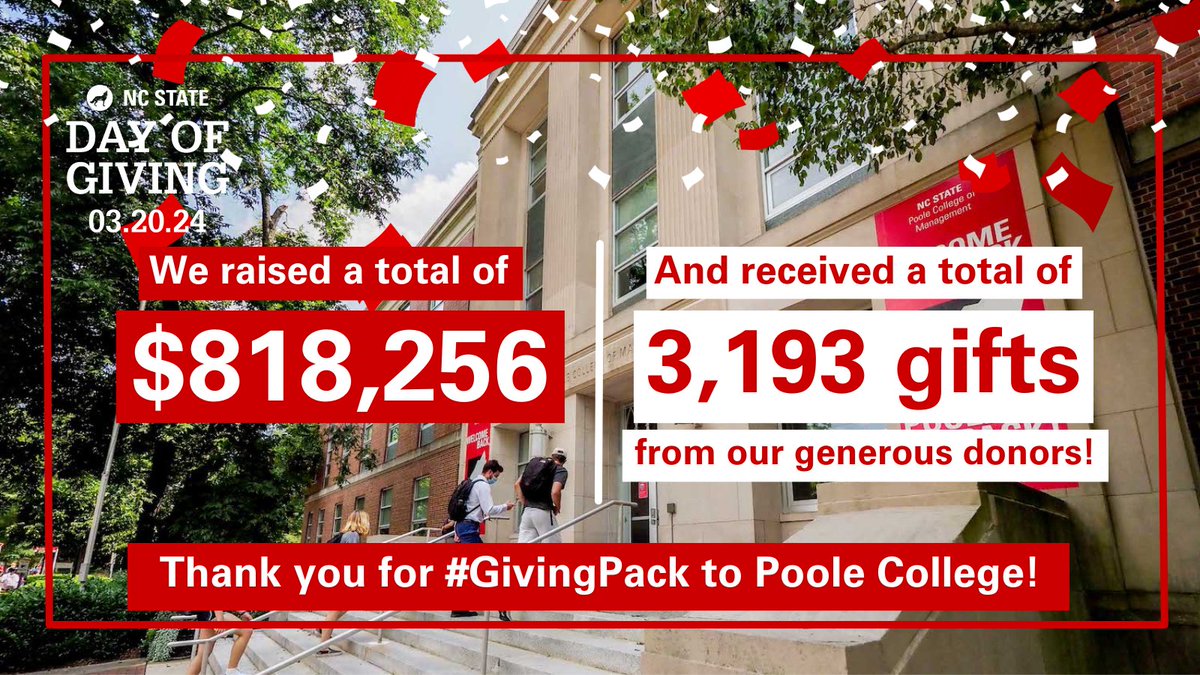Trendspotting in London: Field research seeking ‘the next big thing’
Trendspotting in London? For a group of Poole College's Jenkins MBA students, there's not doubt it was fun, but not in the ‘tourist on holiday’ sort of way.
These students were conducting consumer research using trendspotting or ‘cool-hunting’ – research techniques that include observing, understanding and predicting the new cultural developments that drive the demand for certain goods and the demise of others.
Their work was part of a new international graduate short course, Trendspotting for Culture and Design, taught for the first time in spring 2014 in London by Colbey Reid, director of the Consumer Innovation Consortium (CIC) based in Poole College’s Department of Business Management.
The course was designed to introduce students to the trendspotting consulting industry and familiarize them with key research techniques. Students were encouraged to focus on trends relevant to current or aspirational industry positions, so that they could learn how to use the technique to drive innovation and manage risk in any given professional context. They imported ideas to such industries as technology engineering, food service, health care, fashion retail, human resources, agricultural development, and legal services, Reid said.
The methodology that students learned and applied through this course is commonly requested by CIC partner companies, who desire to manage risk and strategize innovation through an understanding of emerging cultural trends in the next five to 10 years, she said.
She was expecting solid research and results from her students, and she got them. Summaries of two of the students’ project reports – on trends in transportation and juxtaposition in design – appear at the end of this story.
Students prepared for the week-long short-term study abroad course into the theory, methods and praxis of the ‘hunt for the next big thing’ through a set of three weekend sessions. They applied those lessons during their excursions throughout London, returning with a collection of observations and artifacts that were summarized into trend books: reports that combine visual representations and written explanations of new cultural developments.
Writing in a blog on the third day of the experience, Rachel Huffman, then a first-year student in the Jenkins MBA program, states, “I’m amazed at how much we’ve been able to experience in such a short amount of time – from outdoor markets to fringe theater. There is so much to observe and absorb in London! It is clear why Dr. Reid would bring us to this city for trendspotting.”
Huffman continued, “My colleagues and I are having a great time navigating the city, searching for trends and learning the methodologies to substantiate our findings. Some of us have identified fashion trends. Others are tracking trends they've observed in food, public transportation and sustainability.”
The students also got to experience a growing trend in the performing arts – immersion theater. In a production of “I Do,” the students joined other theatre participants traveling in groups to six different hotel rooms to watch the play. “The performance was amazing and sparked a long discussion about the arts and trends we're seeing in this space,” Huffman said.
Each student focused on one trend to report on for their final project. Following are summaries from two of those projects.
Sustainability and transportation
McKinlay Jeannis focused on transportation and environmental concerns. In a city of 8.2 million residents and 2.7 million cars or vans – compared to New York City, with roughly 8.4 million residents and 2 million registered vehicles – and gasoline prices at around $9 per gallon, Londoners are embracing alternative modes of transportation.
In addition to carpooling and public transportation, drivers are modifying their cars to run on Liquid Propane Gas, which is “significantly cheaper than petro,” as Jeannis learned from one car owner who had switched to LPG. The payoff: less storage space in the ‘boot’ – the trunk of the car. Drivers in London also pay a ‘congestion charge’ of £10 daily if driving between 7:00 a.m. and 6:00 p.m., Monday to Friday. This type of pollution control is cropping up in other cities as well, Jeannis states, citing a car ban based on license plate numbers that has been imposed in Paris, restricting drivers from 5:30 a.m. to midnight.
Barclays, a major global financial services provider with a 300-plus year history, is sponsoring another option: bicycles for hire.
“One morning I witnessed a London native that appeared to be on his way to work. He parked his car in a location with free parking and simply road (on a Barclay bicycle) to work, where parking may have not been free or easily to find,” Jeannis reported. “The Barclays Cycle Hire also promotes healthy living, going green and community building. These unique values that this megatrend creates also contribute to its leverage across various customer segments.”
Juxtaposition: Trendspotting for Culture + Design
Janelle Tracy explored the growing trend of juxtaposition in fashion and design. “Pairing things that don’t seem to go together has been going on for some time, but the idea of juxtaposition still continues to influence the ways we behave, how we express ourselves, and the things we consume,” she writes in her summary report.
Citing a paper by E.J. Arnould and C.J. Thompson (Consumer Culture Theory (CCT): Twenty Years of Research, March 2005), she states that the marketplace has become the preeminent source of resources through which people construct narratives of identity. These narratives are often marked with points of conflict and “juxtapositions of seemingly antithetical meanings and ideals.”
In London, Tracy observed a popular look among females in their late teens to late twenties: short shorts, sheer tights, and athletic shoes. “The most frequently observed combination is blue denim short shorts, sheer black tights, and black or white athletic shoes, a combination with conflicting effects,” she wrote. “When asked to describe both the outfit and their perception of the individual wearing the outfit as part of a depth interview, Americans used similarly conflicting words. Unfamiliar with the look as it is not yet popular in the U.S., interviewees said things like ‘young but edgy’ and ‘fun yet practical.’
In reviewing the qualitative data, the theme that emerged was juxtaposition, Tracy states. “The interviewees very quickly observed the varied elements of the outfit and assigned descriptions that they recognized had contrasting effects … ‘I associate tights with skirts and dresses, which then I associate with heels not sneakers,’” her interviewees stated. “The conflict was assigned to the juxtaposed roles and goals of the individual – ‘she wants to look sexy, but be comfortable’,” Tracy states.
“This finding substantiates the idea of juxtaposition and that an individual’s complexity of interests, roles, and responsibilities can be expressed at once, particularly through fashion,” Tracy states, noting that the same idea of juxtaposition can be observed in other areas, including art, furniture and home furnishings.
While not a new trend, she concludes, “juxtaposition will continue to influence consumer behavior and culture for the next five to 10 years. As people continue to expand their networks, interests, roles and responsibilities in greater number, juxtaposition will finds its way into culture and design – and in more extreme, boundary pushing ways. Other trends will only spur continued juxtaposition. Technology innovations allow an individual to take on more and more varied tasks and allow them to more easily pursue multiple interests.”
Globalization also leads to juxtaposition, she states. “As people gain increased exposure to different cultures and styles, these differences will continue to be reflected in culture, cultural traditions and design.”
For companies, this will require going beyond market segmentation based on gender, race and age. “As consumers continue to become more complex, it will be imperative that companies leverage the power of new consumer research information such as psychographics to understand consumption behavior,” Tracy states.
Kaitlin Strahler tracked an emerging "new places for food spaces” trend: multiple new forms of pop-up “restaurants” materializing across the city.
Trendspotting is one of the tools used by graduate students working on research projects with companies through the Consumer Innovation Consortium, based in Poole College’s Department of Business Management.
Students also observed:
- numerous jewelry, accessory, clothing, and furniture design trends; art trends
- art trends (especially in relation to what is becoming very desirable in the art market—specifically, street art and other marginal/popular/youth forms)
- urban design and renewal trends (esp. through study of London’s East End)
- technology innovations, especially those that enable consumers to customize the function of generic product functions (i.e. fuel conservation devices inserted into cars that customize the form and amount of fuel used to power the vehicle)
The consortium, with its related coursework and corporate relations, was established by Stacy Wood, Langdon Professor of Marketing. Her research focuses on how consumers respond and adapt to change or innovation. Wood also manages a consumer research lab at Poole College.
In the past academic year, 40 graduate students in the Consumer Innovation Practicum course worked with four leading consumer products companies affiliated with the consortium: AmerisourceBerge, Bayer CropScience, Clorox and Cotton Incorporated. Ashton Woods Homes joined in spring 2014.


